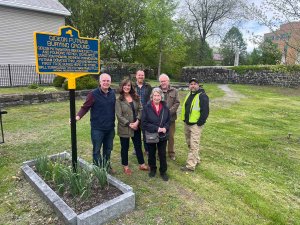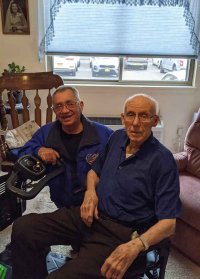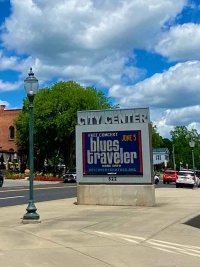Fall sports have started and with it comes in the inevitable sprains and strains that can derail an athlete’s hard work and impact a team’s outcome. It was an injury that led me to a career in physical therapy. When I was in college I rolled my ankle, which I had done several times throughout my high school career. The difference between high school and college was that in college I had to rehab my ankle. I was sent directly from the basketball court to the training room where I started rehab immediately...there was no resting it. This was 30 years ago, and yet today there are still recommendations for “rest” after injury.
I want to be clear here, there are some injuries that need immobilization (which is forced rest) and some that need surgery to repair an injury. But the vast majority of sprains and strains need guidance and most, if not all, should be dealt with sooner rather than later. Even mild injuries can benefit from some guidance to reassure the athlete that they can do something proactive to stay on the field/court. The point is, there is a lot more you can do then simply ice and rest an injury.
Sports science has come a long way and we know that rest is not the most effective strategy when dealing with most athletic injuries to the muscles and joints. Even when you are not able to play because of the injury there is a lot you can do. For example, a few years ago I worked with one of the all-American runners from Saratoga High School. She had a stress fracture and was advised to stop running for six weeks. I spoke to her parents and her physician and suggested we take advantage of her time off running and work on areas that were being neglected due to the rigors of her training. So she was “resting” by not running, but behind the scenes, she was definitely not just resting.
I designed exercises for her to do daily that included mobility drills, lifting weights, aqua jogging and a variety of other top-secret techniques (just kidding, we did a bunch of core stabilization work). When she came back for her first race she surprised the coaches by finishing second, just behind the top runner in that particular event. She was an exceptional athlete and worked her butt off; my point was she was not “resting” just waiting to start running again.
The therapists at my office and I have already seen several athletes this Fall. Most were minor muscular injuries (strains) or mild joint injuries (sprains). We started them all on programs and most continued practice throughout the process. The severity of the injury will certainly dictate the course of treatment, but let me be as clear as I possibly can, taking a few days off and “icing it” or “resting it” is usually not the most productive way to handle an injury.
I want to try to encourage parents of athletes and athletes themselves to do what college and professional athletes do when they have an ache and pain or more serious injuries...they go get help instead of taking a break.
The Physical Therapists at my office are trained to work with the spectrum of musculoskeletal conditions. We want our community to know that we have expertise in dealing with injury assessment and treatment of all musculoskeletal injuries including the return to sports. In addition, our clinicians have been through rehabilitation themselves. As former athletes, we understand why it matters so much to get better as quickly as possible and to reduce the likelihood of reinjury by not rehabilitating it properly.
Recently a high school athlete came to see me and my therapists for an injury to his hip. The location of symptoms combined with a physical examination indicated it was a muscular injury. He had been told to “rest” a few days and ice the injury. He was not instructed to do anything else. Fortunately, my son recommended he talk to me, and he did.
After performing an evaluation I agreed that full participation in sport at this time was not a good idea. But it was clear to me that he needed to address the injury directly. We started therapy that included manual therapy, mobility drills and strengthening exercises. We talked about what he could do to prepare for his return to sport. We identified a few potential causes of his pain and dealt with each one. Resting was not enough to ensure he would be ready to play and not re-injure. We strive to figure out how and why he got injured and design a program to address these issues.
He returned to practice in just a few days, but he did not feel 100%. Rather than pull him out to “rest” more, we talked to him about how to start practicing again, but with specific guidelines to avoid re-injury. We also taught him to begin gradually adding more aspects of his sport, day by day until he was 100%. So instead of “resting” and not doing anything to help himself, we recommended he wean back into sports while continuing to work with us so we could address any flare-up or change to his status.
Just like when I was in college and got hurt, I was not allowed full participation until I passed a “return to sport” assessment by an expert in sports rehabilitation. I continued rehab until I demonstrated a readiness to return. As sports rehabilitation experts, we are trained to know these things and help athletes stay in the game when possible or return to sports as soon as possible as safely as possible.
The reality is that every injured college or professional player is doing rehab even as they return to sport...we are working to assist the return.
Rest, especially with a muscle or joint issue is simply not enough. When you injure these structures you can assist the recovery by taking an active approach...ideally under the supervision to a physical therapist to ensure you address all of the issues you may be facing.
At my office, we specialize in injury prevention, rehabilitation, and progression back to sports and sports performance programming that is unique to the individual athlete. We also offer these services for recreational athletes or fitness participants. We believe that the sooner we are able to see the athlete after an injury the sooner they are to get back playing. If you have any questions or you would just like your athlete to have a sports screening, you can contact us at 518-306-6894 or email me at This email address is being protected from spambots. You need JavaScript enabled to view it.





























 How to resolve AdBlock issue?
How to resolve AdBlock issue? 









